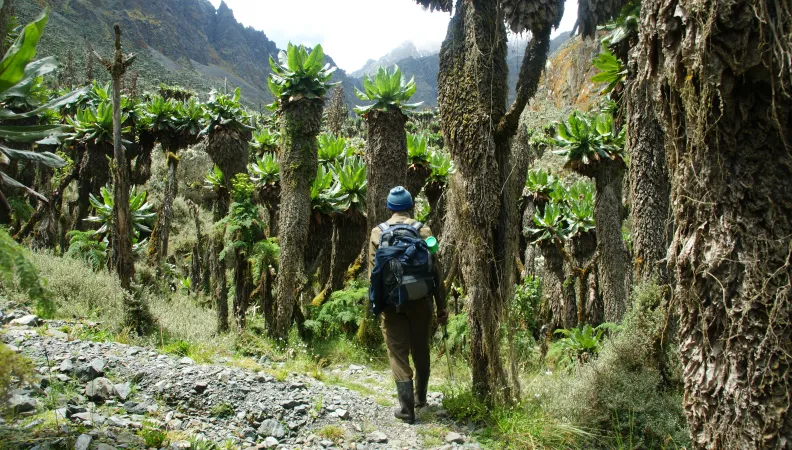Share the page
Sustainable funding for the Rwenzori Mountains National Park
Project


-
Project start date
-
Status
Completed
-
Estimated date of project termination
-
-
Project financing date
-
-
Financing duration
-
3 years
-
Type of program
-
FFEM
-
Global financing amount
-
2109427 €
-
FFEM financing amount
-
700000 €
-
Project lead member institution(s)
-
Ministry for Europe and Foreign Affairs
-
Country and region
-
Uganda
-
Location
-
Rwenzori Mountains
-
Type of financing
-
Grant
-
Beneficiaries
-
WWF France
-
Type of beneficiary
-
NGO, Foundation
To develop perennial sources of funding for the Rwenzori Mountains National Park and the local population, namely to increase tourism revenues and private sector mobilization by a water PES pilot program, carbon credits and CSR.
Context
The Rwenzori Mountains National Park (RMNP), established in 1991, is located on the border between Uganda and the DRC. This ecosystem is one of the biggest in the Virunga National Park and peaks at 5,109 meters. Its widely diverse environment (Afro-montane forest, Afro- alpine grasslands, wetlands, glaciers) is home to many species such as the chimpanzee, red duiker or the Rwenzori leopard.
The Rwenzori ecosystem provides essential environmental services. In addition, it is a water tower for two million people and many companies. The diversity of its landscapes makes it a unique, although unknown, tourist destination.
The anthropic pressure in the buffer zone caused by some 805,000 inhabitants, seeking land for subsistence farming, firewood and protein sources, has aggravated chronic erosion.
Description
By supporting an initiative implemented by the WWF, the FFEM, in conjunction with the European Union, contribute to setting up sustainable biodiversity financing tools, such as payments for environmental services (PES), tourism or carbon credits. Financed by private partners affected by the sedimentation of the Mubuku/Nyamwamba rivers, the water PES mechanism reward farmers in the upstream catchment area for better land management (reforestation and reducing erosion).
The project is structured into 5 components and several activities :
- Mobilization of the private sector around the Rwenzori ecosystem
To encourage the private sector to invest in the Rwenzori ecosystem through Payment for Environmental Services (PES), Corporate Social Responsability (CSR) or carbon crédits. - National institutional and regulatory framework favorable to PSE
The efforts of the project on PES in the Rwenzori be sustained by a process of consultation and adaptation of the regulatory framework for PSE, under the direction of NEMA. This component allow a review of the existing legal and fiscal arrangements, the sensitization of policy makers and the drafting of provisions promoting PES in the Environment Act. - Pilot scheme for payment for environmental services
The mechanism reward farmers in the upstream catchment area for better land management (reforestation and reducing erosion). To do so, the project (i) build the scientific, technical and institutional PES through preparatory studies (hydrological and socio- economic) and consultations, (ii) support the implementation of agri-environmental measures by farmers, and (iii) monitor the performance of farmers and PES impact on the water service. - Tourism development in and around the Rwenzori Park
The project aims to increase the number of tourists by diversifying the offer, and sharing the benefits of this tourism with communities. - Communication and sharing of project lessons with tools
The project develop communication tools (publications and media campaigns) and ensure the dissemination of the lessons learned in regional and international conferences.
Impacts
- 6,000 homes close to the park benefit from revenue initiatives implemented by the project and the park by 2020.
- At the national level, the new Environment Act shall include provisions on payments for environmental services.


